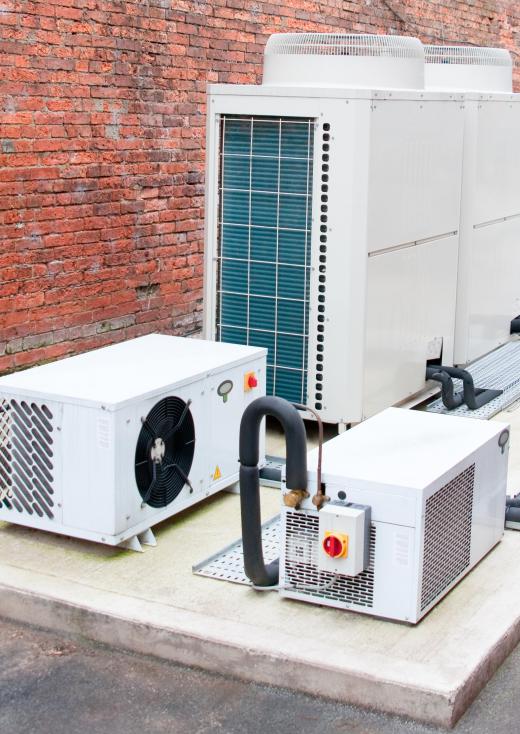A thermal valve is a valve that responds to a change in temperature, and it typically is used to help machines that deal with high pressure or flowing liquids to avoid breaking down. There are two major types of thermal valves, expansion and relief. Both types of these small components perform similar tasks but, they do so in vastly different ways. Thermal valves are found in everyday household items ranging from pressure cookers, refrigerators and air conditioners all the way up to complex industrial machines. Without these simple valves, all of those items mentioned would be bigger safety hazards and might not be part of everyday life.
The expansion type is the most common variety of a thermal valve. It is responsible for the flow of cooling liquid within many refrigeration and air conditioning units. The valve opens and closes depending on the temperature of the machine in which it is installed, allowing only a specific amount of coolant to pass. The key to the thermal expansion valve's success is its temperature-sensing bulb.

A temperature-sensing bulb is a small gas-filled bulb directly attached to the thermal valve. The bulb senses changes in temperature and adjusts the valve accordingly. When the temperature lowers, the valve closes, allowing less fluid to cool the unit. When the unit heats up, the valve opens, sending more coolant in order to reduce the temperature.
Expansion valves also are renowned for helping to increase efficiency. This unit automatically adjusts to keep itself at a specific temperature, so there is little wasted energy from unnecessary cooling. The valve keeps the unit at a consistent temperature, so a refrigerator uses less electricity.
Another common type of thermal valve is the relief valve. This offers a more simplified operation than the expansion valve but still opens and closes in order to allow passage. In the case of a thermal relief valve, it restricts the passage of hot gas vapor from pressure buildup. One of the earliest examples of this valve comes from the 1600s and the invention of the pressure cooker, which has a gas-releasing valve built into the lid.
The pressure cooker's thermal valve has a spring, rather than a bulb, as its sensitive element that controls the opening and closing. When the pressure in the valve gets too great, the spring presses down and opens the valve until enough vapor escapes to lower the pressure to an acceptable level. This release helps ensure that highly pressurized machines, such a heating system's boiler, can operate safely by keeping them from exploding.
